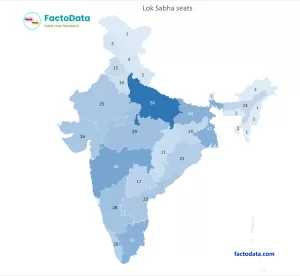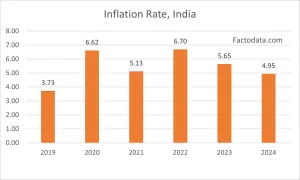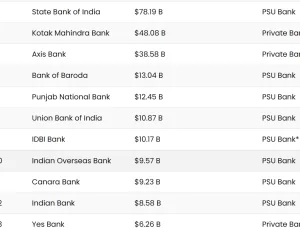Why Indians leaving the country: migration rate from 1960 to 2025
More than 600,000 people (6 lakh) left India in 2024, migrating to countries like the United Kingdom (UK), United Arab Emirates (UAE), Canada, Australia, and the United States (US). This trend is often referred to as “brain drain”—a phenomenon where skilled professionals leave their home country in search of better career opportunities, higher wages, and improved living conditions.
Net migration is defined as the difference between the number of immigrants (people entering a country) and the number of emigrants (people leaving a country). It represents the net total of migration during a specific period and includes both citizens and non-citizens.
Net Migration = Number of Immigrants – Number of Emigrants
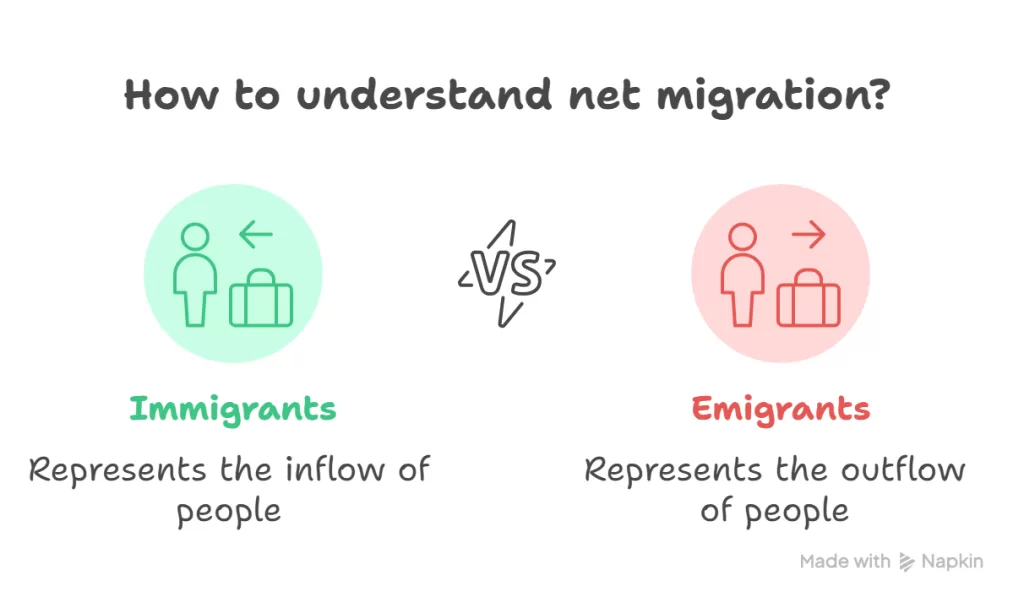
Read also: Most Populated cities in India
What is brain drain?
Brain drain is phenomena where highly skilled and educated individual leave their home country to another nations in search of better job opportunities, higher salaries, advanced research facilities, and improved quality of life.
Brain drain in India is significant issue where highly educated students leaving India to countries like USA, Australia, UK, Germany, Canada etc. The impact of brain drain on India includes the loss of talent in critical sectors like healthcare and technology, reduced innovation and R&D capacity, and the economic cost of subsidized education. However, it also brings benefits such as increased remittances and the growing global influence of the Indian diaspora.
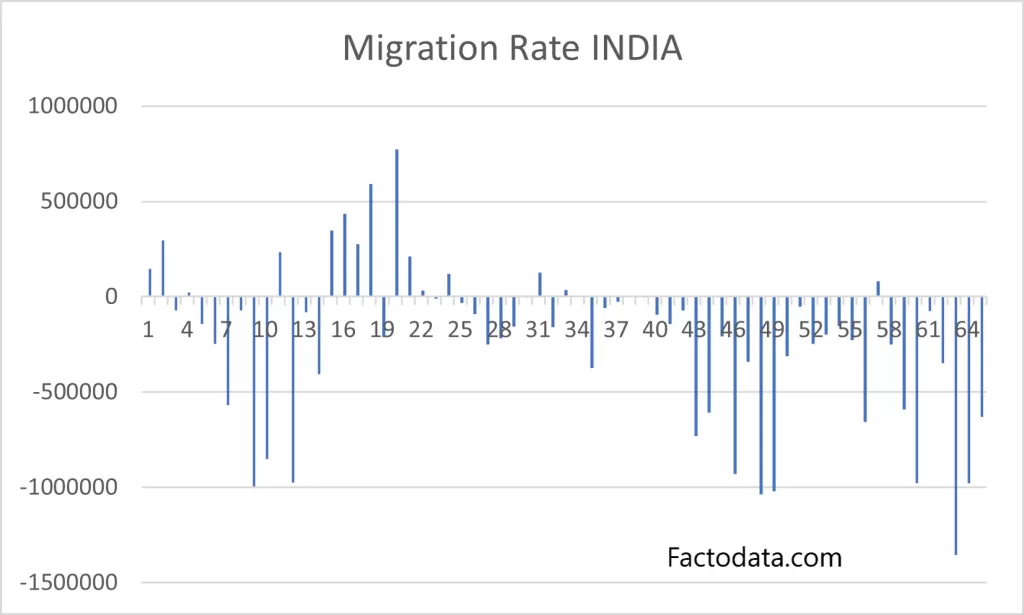
Where are Indians Going?
High net worth Individuals(HNWI) leaving India to following countries to better lifestyle and living standards. brain
- USA
- Canada
- Australia
- UK
- Italy
- UAE
- Oman
- Singapore
Read also: Life Expectancy in India 2025: Trends, Predictions & Key Factors
Net Migration rate of India from 1960 to 2025
| Year | Net Migration | % Change |
|---|---|---|
| 1960 | 146955 | |
| 1961 | 295177 | 100.9% |
| 1962 | -70514 | -123.9% |
| 1963 | 21640 | -130.7% |
| 1964 | -141916 | -755.8% |
| 1965 | -248299 | 75.0% |
| 1966 | -566982 | 128.3% |
| 1967 | -70314 | -87.6% |
| 1968 | -995416 | 1315.7% |
| 1969 | -851844 | -14.4% |
| 1970 | 233782 | -127.4% |
| 1971 | -974574 | -516.9% |
| 1972 | -82816 | -91.5% |
| 1973 | -404743 | 388.7% |
| 1974 | 347869 | -185.9% |
| 1975 | 434205 | 24.8% |
| 1976 | 275984 | -36.4% |
| 1977 | 590626 | 114.0% |
| 1978 | -210444 | -135.6% |
| 1979 | 774094 | -467.8% |
| 1980 | 210914 | -72.8% |
| 1981 | 33243 | -84.2% |
| 1982 | -10687 | -132.1% |
| 1983 | 119694 | -1220.0% |
| 1984 | -32313 | -127.0% |
| 1985 | -89991 | 178.5% |
| 1986 | -249545 | 177.3% |
| 1987 | -219150 | -12.2% |
| 1988 | -155676 | -29.0% |
| 1989 | -2907 | -98.1% |
| 1990 | 125514 | -4417.6% |
| 1991 | -157911 | -225.8% |
| 1992 | 35155 | -122.3% |
| 1993 | 2364 | -93.3% |
| 1994 | -375253 | -15973.6% |
| 1995 | -57297 | -84.7% |
| 1996 | -26388 | -53.9% |
| 1997 | 880 | -103.3% |
| 1998 | -1049 | -219.2% |
| 1999 | -95320 | 8986.7% |
| 2000 | -143960 | 51.0% |
| 2001 | -70346 | -51.1% |
| 2002 | -732419 | 941.2% |
| 2003 | -606970 | -17.1% |
| 2004 | -206660 | -66.0% |
| 2005 | -929454 | 349.8% |
| 2006 | -342177 | -63.2% |
| 2007 | -1037200 | 203.1% |
| 2008 | -1020047 | -1.7% |
| 2009 | -312905 | -69.3% |
| 2010 | -50905 | -83.7% |
| 2011 | -247017 | 385.3% |
| 2012 | -198935 | -19.5% |
| 2013 | -151372 | -23.9% |
| 2014 | -227263 | 50.1% |
| 2015 | -655085 | 188.2% |
| 2016 | 81248 | -112.4% |
| 2017 | -251642 | -409.7% |
| 2018 | -589794 | 134.4% |
| 2019 | -978969 | 66.0% |
| 2020 | -73806 | -92.5% |
| 2021 | -348916 | 372.7% |
| 2022 | -1353478 | 287.9% |
| 2023 | -979179 | -27.7% |
| 2024 | -630,830 | -35.6% |
| 2025 |
Source: World Bank

